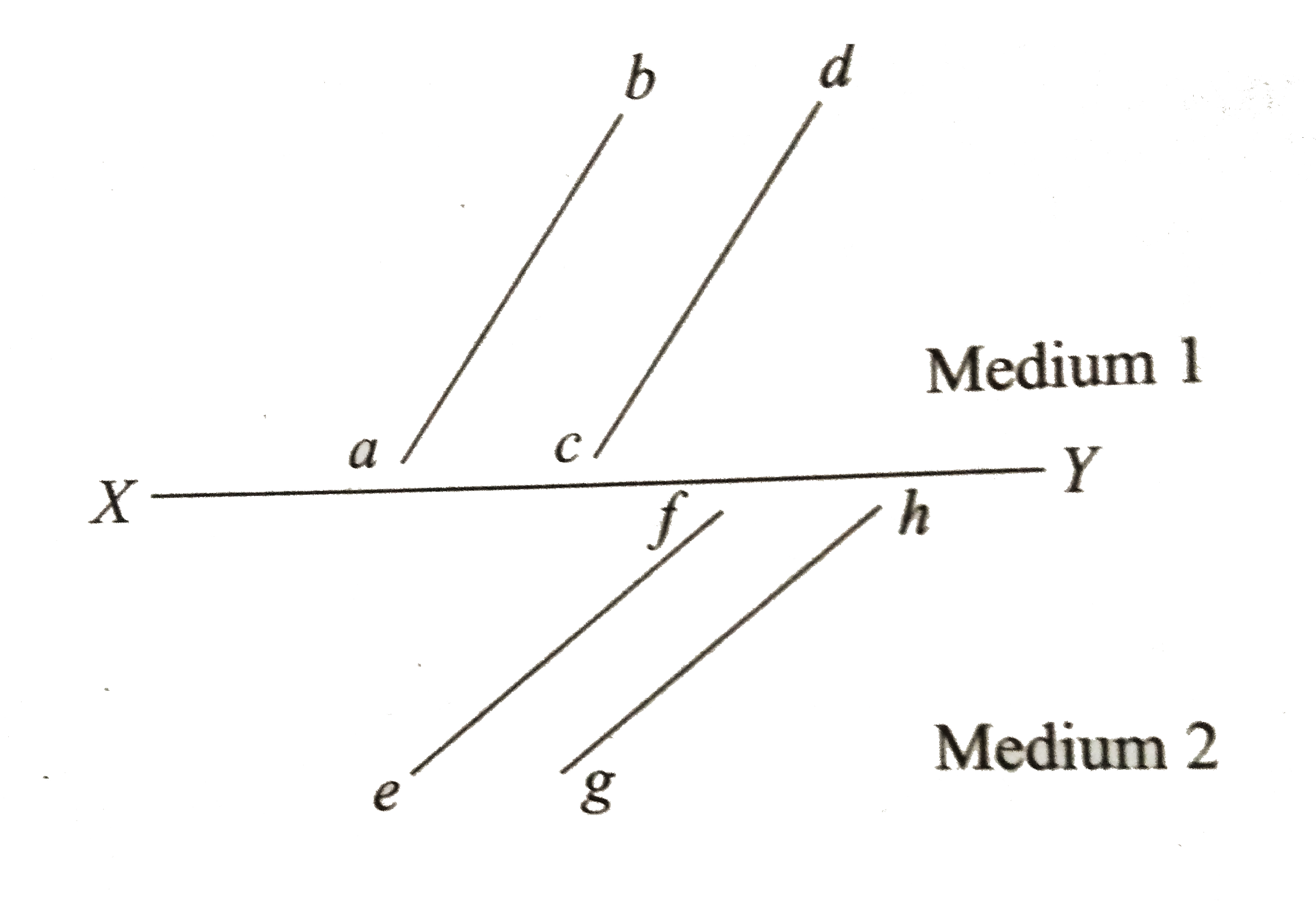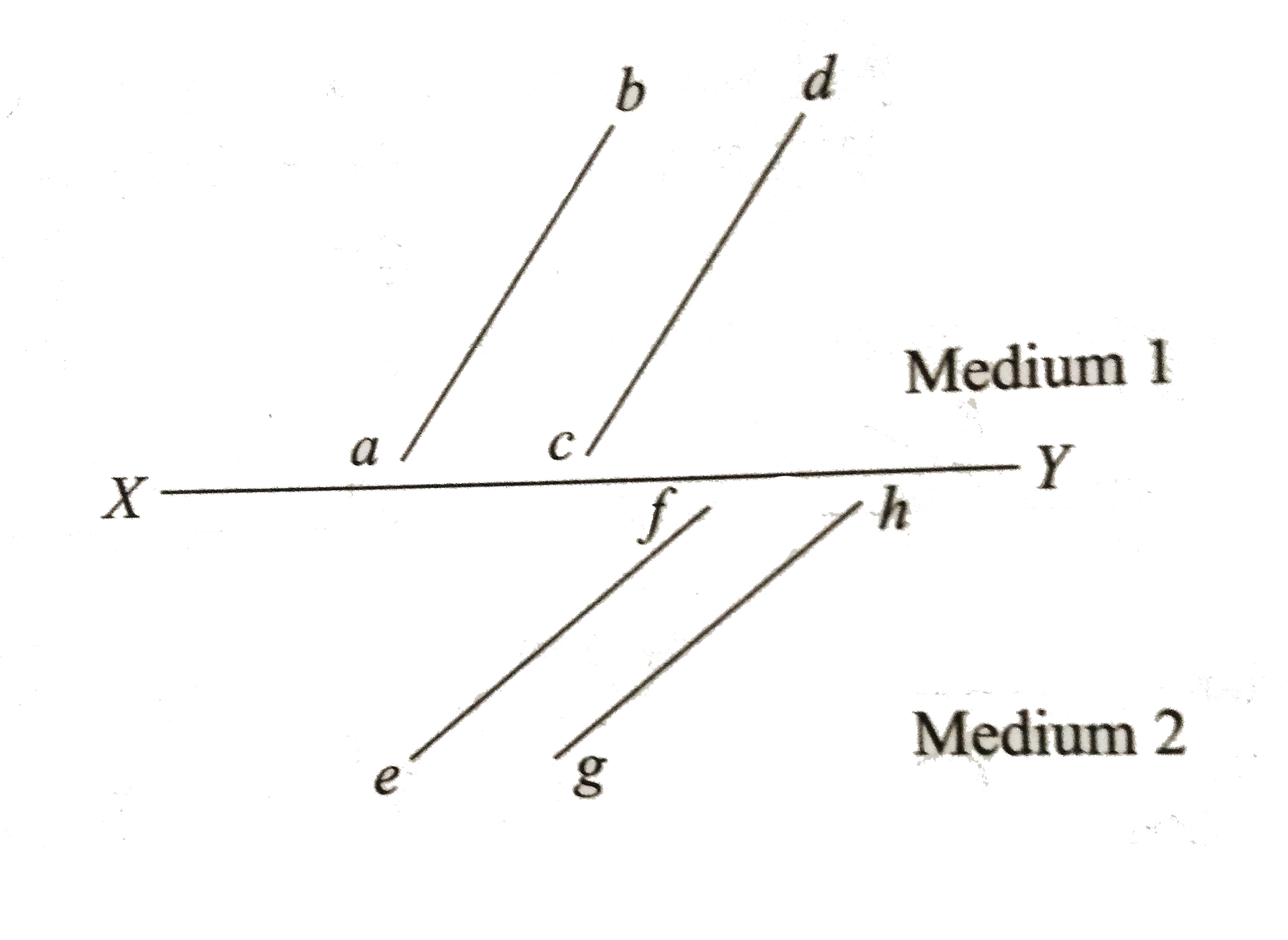A light wave can travel
in vacuum
in vacuum only
in a meterial medium
in a meterial medium only.
The correct Answer is:A, C
To solve the question regarding the travel of light waves, we will analyze each option provided and determine the correct answers based on the properties of light.
1. Understanding Light Waves:
- Light waves are electromagnetic waves that can travel through different mediums. They are classified as transverse waves.
2. Analyzing Option 1 (In vacuum):
- Light can travel in a vacuum because it does not require a medium to propagate. In fact, the speed of light is fastest in a vacuum (approximately 3×108 m/s).
- Conclusion: This option is correct.
3. Analyzing Option 2 (In vacuum only):
- This option suggests that light can only travel in a vacuum and not in any other medium. However, this is incorrect because light can also travel through various materials (like air, water, glass, etc.).
- Conclusion: This option is incorrect.
4. Analyzing Option 3 (In a material medium):
- Light can also travel through material mediums such as air, water, glass, etc. The speed of light is slower in these mediums compared to a vacuum, but it can still propagate through them.
- Conclusion: This option is correct.
5. Analyzing Option 4 (In a material medium only):
- This option implies that light can only travel in material mediums and not in a vacuum. This is incorrect, as we established that light can travel in a vacuum as well.
- Conclusion: This option is incorrect.
Final Answer:
The correct options are Option 1 (In vacuum) and Option 3 (In a material medium).
---
- Light waves are electromagnetic waves that can travel through different mediums. They are classified as transverse waves.
- Light can travel in a vacuum because it does not require a medium to propagate. In fact, the speed of light is fastest in a vacuum (approximately 3×108 m/s).
- Conclusion: This option is correct.
- This option suggests that light can only travel in a vacuum and not in any other medium. However, this is incorrect because light can also travel through various materials (like air, water, glass, etc.).
- Conclusion: This option is incorrect.
- Light can also travel through material mediums such as air, water, glass, etc. The speed of light is slower in these mediums compared to a vacuum, but it can still propagate through them.
- Conclusion: This option is correct.
- This option implies that light can only travel in material mediums and not in a vacuum. This is incorrect, as we established that light can travel in a vacuum as well.
- Conclusion: This option is incorrect.
The correct options are Option 1 (In vacuum) and Option 3 (In a material medium).
Topper's Solved these Questions
- LIGHT WAVESBOOK - HC VERMA ENGLISHCHAPTER - LIGHT WAVESEXERCISE - Exercises
41 Videos
- LIGHT WAVESBOOK - HC VERMA ENGLISHCHAPTER - LIGHT WAVESEXERCISE - Question for short Answer
11 Videos
- LIGHT WAVESBOOK - HC VERMA ENGLISHCHAPTER - LIGHT WAVESEXERCISE - Objective -1
17 Videos
- GEOMETRICAL OPTICSBOOK - HC VERMA ENGLISHCHAPTER - GEOMETRICAL OPTICSEXERCISE - Question For short Answer
18 Videos
- MAGNETIC FIELDBOOK - HC VERMA ENGLISHCHAPTER - MAGNETIC FIELDEXERCISE - objective2
9 Videos
Similar Questions
A light wave travels from glass to water. The refractive index for glass and water are 32 and 43 respectively. The value of the critical angle will be:
View SolutionStatement 1: Sound waves can not propagate through vacuum but light waves can.
Statement 2: Sound wave can not be polarised but light waves can be.
View Solution
Knowledge Check
When a light wave travels from air to glass :
Aits wavelength decreases.Bits wavelength increases.Cthere is no change in wavelength.Dits frequency decreases.Assertion: When a light wave travels from a rarer to a denser medium, it loses speed. The reduction in speed imply a reduction in energy carried by the light wave.
Reason: The energy of a wave is proportional to velocity of wave.AIf both assertion and reason are true and reason is the correct explanation of assertion.BIf both assertion and reason are true but reason is not the correct explanation of assertion.CIf assertion is true but reason is false.DIf both assertion and reason are false.A light wave, travelling at 3×108m/s has a frequency of 6×1015 Hz. What is its wavelength?
A5×10−8mB2×10−7mC5×10−7mD5×10−6m
A : When a light wave travels from a rarer to a denser medium, it looses speed. The reduction in speed imply a reduction in energy carried by the light wave.
R : The energy of a wave of proportional to frequency of wave.
View SolutionFig. shows a surface XY separating two transparent media, medium 1 and medium 2. Lines ab and cd represent wavefronts of a light wave travelling in medium 1 and incident on XY. Line ef and gh represent wavefront of the light wave in medium 2 after rafraciton.

Light travel as a
View SolutionGive the ratio of velocities of two light waves traveling in vacuum and having wavelengths 5000A∘ and 6000A∘.
View SolutionFig. shows a surface XY separating two transparent media, medium 1 and medium 2. Lines ab and cd represent wavefronts of a light wave travelling in medium 1 and incident on XY. Line ef and gh represent wavefront of the light wave in medium 2 after rafraciton. Speed of light is

View SolutionBat can travel with
View Solution
